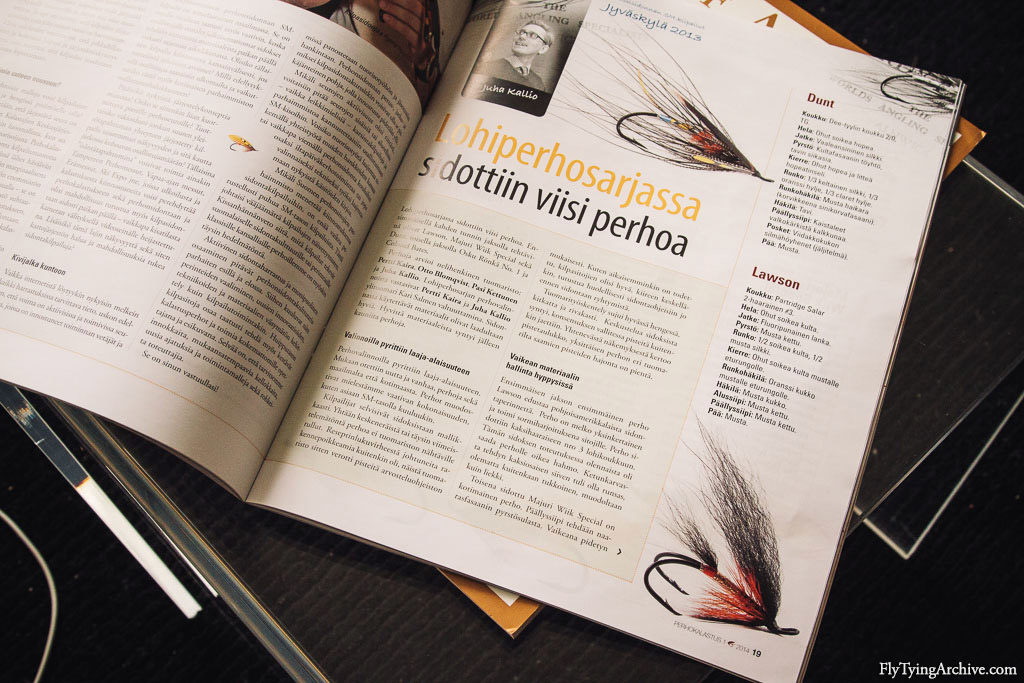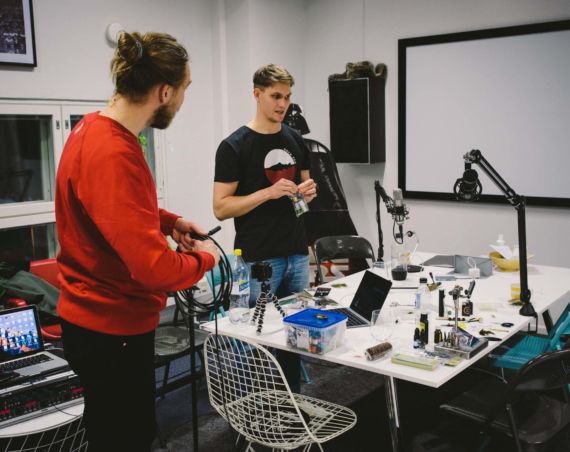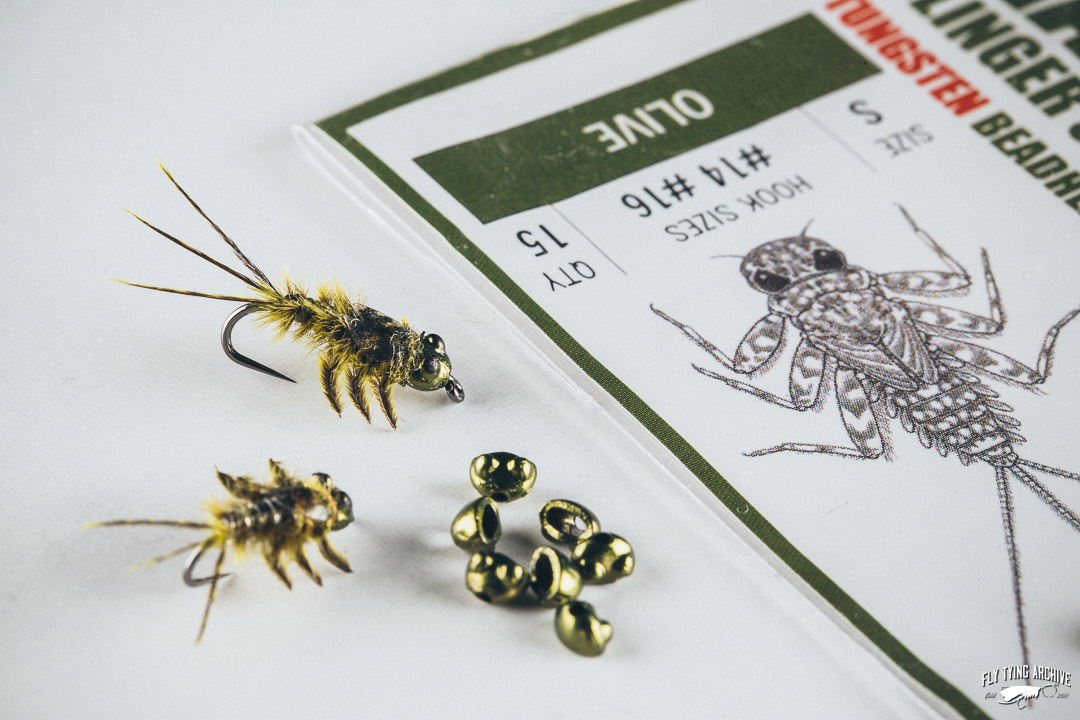Finnish National fly tying competition
Over the years I’ve got a lot of questions what kind of competition the nationals here are. To put it simply it’s a two day fly tying event where you tie flies in 4 hours each day and then the flies are judged anonymously by a panel of four judges. Even though the competition is well respected and when the tying is on everyone gives their best the most important part for me and many others is to once in a year meet with most of the best tyers in the country and share a pint or two while talking about flies and fishing.
There are two competitions, salmon flies on Sunday and all the other flies on Saturday. There’s also two categories for younger tyers under 16 and 18 on Saturday. On this article I’m going to focus on the salmon fly comp. from couple months ago. The photos are from a magazine that featured the results and my flies tied at the competition. It was my first gold in the salmon fly category as I’ve been too familiar with the silver medal in the past.
Tyers don’t know beforehand what flies they are going to tie and all materials are provided by the organizers to make the starting point equal. There are two 2 hour long sequences with a 1 hour break in between. You have to tie the flies in given order and you only get materials for one fly at a time so you can’t prepare for the next fly before the current one is finished. When finished flies are put in to plastic containers that are tagged with numbers so that the judges don’t know whose flies they are looking at.
First 2 hour sequence this year consisted of Lawson, Majuri Wiik Special and Dunt. Lawson is a pretty simple hair winged salmon fly that has both tail and wing made from fox fur. I just tried to get it over with as fast as I could and to get proportions right as I knew there wasn’t going to be huge differences made on this pattern. Important part is to make the tail and wing to a teardrop shape and to use the correct amount of fur on the wing and tail.
Majuri Wiik Special is a classic Finnish salmon fly. Nothing fancy here either but getting a neat butt from ostrich and peacock tied in together can be challenging. Also the ringneck pheasant tail can be tricky to get to behave when mounting the wing but the underwing helps a lot.
Dunt as seen on my earlier post is a traditional Dee fly and is pretty typical example of one. Main issue for me was the jungle cock substitute where we had Pro Sportfishers jungle cock substitutes that work well on tubeflies and even on featherwing salmonflies but were pretty thick when mounted on a dee fly. They were difficult to position symmetrically underneath the hook and resulted in a headshape that was far from ideal but the materials were the same for everyone so that wasn’t an issue regarding the competition.
Second sequence had only two flies but they were a bit more complex to tie. First was Osku Rönkä No.1 which is a traditional Finnish salmon fly. These have usually low and long profile with a tail twice as long as the hook gape. Body is fairly complex and in a pressure situation easy to make mistakes on. I chose too long hackle for the first joint to my liking but the judges didn’t seem to mind. The wings are hard to set low against the hook and you must build a good foundations for the wing. I tied the wing in strips but after the competition thought that I should’ve tied it in strands for a better look.
Last fly was Colonel Bates. Salmon fly version of the Carrie Stevens pattern that was made by Jimmy Younger in 1969. Tinsel body is always difficult when you are in a hurry as the underbody has to be smooth. The wing also has quite a few components which have to be planned pretty carefully to get good proportions. And last but not least when there’s couple minutes left on the clock there’s nothing better to try doing a neat head with a red band. Well maybe trying to get horns on when your hands are shaking like crazy.
Here’s the patterns if you want to try it out. It’s a nice challenge and a good exercise in speed for me at least. The heads aren’t usually varnished on the competition but left as is. You can use varnish if you want but when in a hurry you will usually get cleaner results without it.
Lawson
Hook: Partridge Salar double #3
Tag: Oval gold and fl. red floss
Tail: Black fox
Body: ½ Oval Gold, ½ black floss
Rib: Oval gold over the black floss
Bodyhackle: Orange over the black floss
Hackle: Black
Wing: Black fox
Head: Black
Majuri Wiik Special
Hook: Partridge Single Wilson #4
Tail: Golden pheasant crest and tip of a blue cock
Butt: Peacock and light ostrich herl wound together
Bodyhackle: Yellow for the whole body
Rib: Oval gold
Body: Light yellow floss
Hackle: Yellow
Underwing: Two yellow cock feathers tied back to back
Wing: Female pheasant tail with golden pheasant crest over
Cheeks: Tip of a blue cock feather
Head: Black
Dunt
Hook: TG 2/0
Tag: Oval silver and light blue floss
Tail: Golden pheasant crest and teal
Ribs:Oval silver and flat silver
Body: 1/3 yellow floss, 1/3 orange seals fur and 1/3 claret seals fur
Bodyhackle: Black heron or blue eared pheasant
Hackle: Teal
Wing: Whit tipped turkey. Jungle cock(substitute) feathers drooping underneath the shank
Head: Black
Osku Rönkä No.1
Hook: Low water single #2/0
Tag: Oval silver
Tail: Golden pheasant crest and tippet strands
1st body: Short section of red floss with thin silver rib. Embossed silver tinsel to the middle of the hook ribbed with oval silver tinsel
Butt: Brown hackle and black ostrich herl
Bodyhackle: Brown over the front body
2nd body: Black floss ribbed with oval silver
Hackle: Guinea fowl
Wing: Brown mottled turkey and golden pheasant tail
Head: Black
Colonel Bates
Hook: 2/0
Tag: Oval silver and light yellow floss
Tail: Golden pheasant crest, red goose and kingfisher
Butt: Red wool
Rib: Oval silver
Body: Flat silver tinsel
Hackle: Brown cock and guinea fowl over it
Underwing: 4 yellow cock feathers back to back. Over these with cock feathers halfway in the wing
Wing: Strip of red, yellow and red goose. Summer duck. Golden pheasant crest over
Cheeks: Jungle cock(substitute) and kingfisher
Head: Black with a red stripe in the middle
*we used blue hackle tips in place of kingfisher





